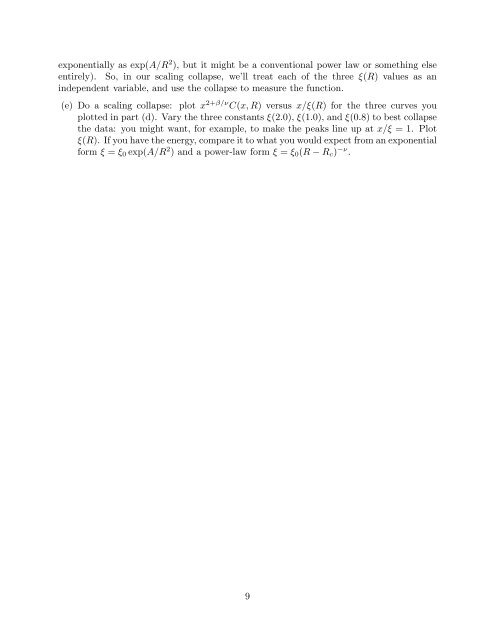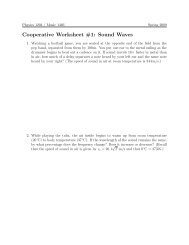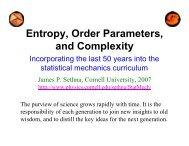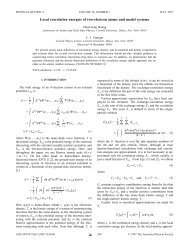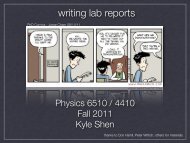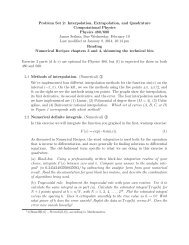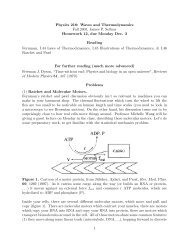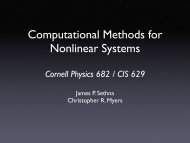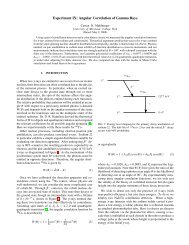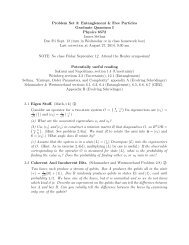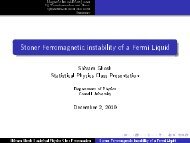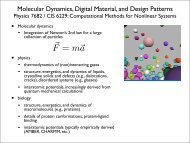Physics 562: Statistical Mechanics Spring 2002, James P. Sethna ...
Physics 562: Statistical Mechanics Spring 2002, James P. Sethna ...
Physics 562: Statistical Mechanics Spring 2002, James P. Sethna ...
You also want an ePaper? Increase the reach of your titles
YUMPU automatically turns print PDFs into web optimized ePapers that Google loves.
exponentially as exp(A/R 2 ), but it might be a conventional power law or something elseentirely). So, in our scaling collapse, we’ll treat each of the three ξ(R) valuesasanindependent variable, and use the collapse to measure the function.(e) Do a scaling collapse: plot x 2+β/ν C(x, R) versusx/ξ(R) for the three curves youplotted in part (d). Vary the three constants ξ(2.0), ξ(1.0), and ξ(0.8) to best collapsethe data: you might want, for example, to make the peaks line up at x/ξ =1. Plotξ(R). If you have the energy, compare it to what you would expect from an exponentialform ξ = ξ 0 exp(A/R 2 ) and a power-law form ξ = ξ 0 (R − R c ) −ν .9


